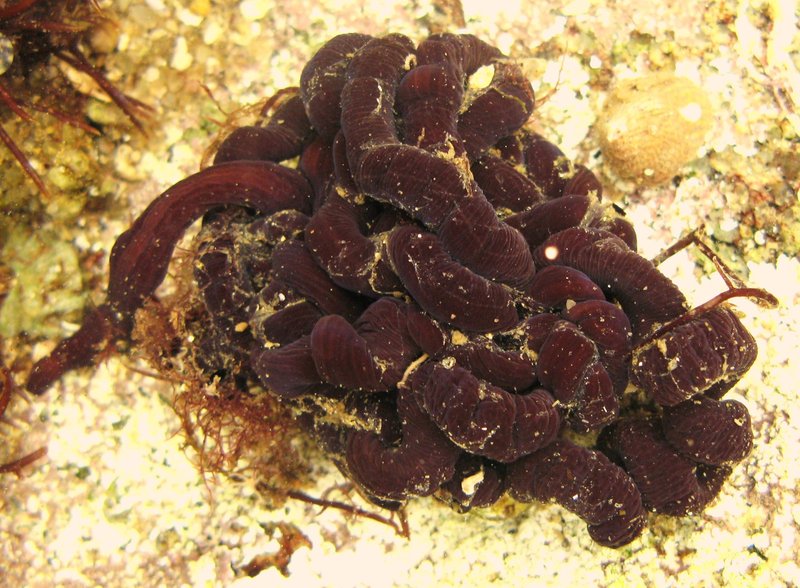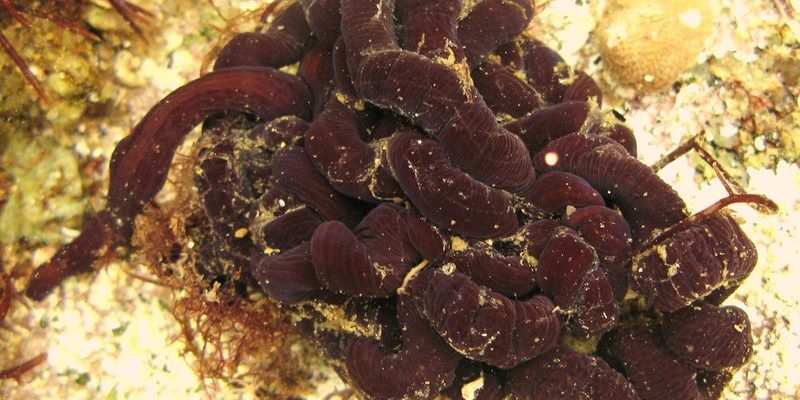
To put it simply, bootlace worms can stretch up to an astonishing 55 meters (that’s about 180 feet!) long. So, if you’re picturing a giant thin noodle, you’re on the right track. They’re like the gentle giants of the marine invertebrate world, often overlooked but absolutely incredible. In this article, we’re going to dive deeper into the world of bootlace worms, exploring their biology, habitat, and what makes them so unique. Let’s take a closer look at these enigmatic creatures.
What Are Bootlace Worms?
Bootlace worms belong to a group of animals known as nemerteans, or ribbon worms. These creatures are known for their elongated bodies and soft, flexible forms. They might look similar to other slimy critters like earthworms, but they’re not quite the same. One of their standout features is their ability to regenerate, meaning if they lose a piece of their body, they can grow it back. Imagine being able to regrow your finger if you accidentally cut it off!
Another interesting thing about bootlace worms is their unique feeding mechanism. They’re equipped with a specialized organ called a proboscis, which they can extend to capture prey. This organ is like a retractable tongue that shoots out to snag small animals like shrimp or fish. It’s a bit like a highly skilled predator that knows when to strike, ensuring they don’t go hungry in their underwater habitat.
Where Do Bootlace Worms Live?
You can typically find bootlace worms in the cold, temperate waters of the North Atlantic, particularly around the coasts of the UK, Norway, and Ireland. They prefer sandy or muddy seabeds where they can burrow in and hide from potential predators. This camouflage helps them avoid being eaten by larger marine animals.
Their habitat is essential for their survival. By living in these types of environments, bootlace worms can access a steady supply of food while also having a safe space to retreat. You might be wondering how they manage to stay hidden; they often create tubes from sediment and organic materials, which adds an extra layer of protection.
The Life Cycle of a Bootlace Worm
Bootlace worms have a fascinating life cycle that starts with eggs being laid in the water. These eggs hatch into larvae, which drift around in the ocean currents. As they grow, they eventually settle down on the seabed to become adults. Here’s where it gets interesting: the larvae can take a while to transition to their adult form, sometimes taking years.
Once they reach adulthood, bootlace worms can live for a long time—some estimates suggest up to 30 years! During this time, they grow and can reach those impressive lengths. Although they are solitary creatures, bootlace worms are also capable of reproducing, often engaging in a type of reproduction called asexual reproduction. This allows them to create clones of themselves, which can help boost their numbers in the ocean.
Feeding Habits of Bootlace Worms
When it comes to feeding, bootlace worms are opportunistic predators. They primarily feed on small marine animals, such as crustaceans, mollusks, and fish. Their proboscis plays a crucial role here—it’s like having a built-in fishing rod! They extend it when they sense prey nearby, quickly grabbing and immobilizing it to enjoy a meal.
What’s particularly interesting is how they digest their food. Bootlace worms secrete enzymes that break down the prey’s tissues, making it easier to absorb the nutrients. This process allows them to thrive in environments where food can sometimes be scarce. You could say they’ve got a unique culinary strategy going on in the depths of the ocean!
Why Are Bootlace Worms Important to the Ecosystem?
Bootlace worms, although they may be small in the grand scheme of things, play a vital role in their ecosystem. By feeding on smaller marine organisms, they help regulate populations, making sure no single species takes over the food chain. They’re like the unsung heroes of the ocean floor, keeping the balance in check.
Their burrowing behavior also helps to aerate the sediment on the seabed, promoting a healthier environment for other marine life. This means that bootlace worms aren’t just living in the shadows; they contribute significantly to the health and sustainability of their habitats.
Common Misconceptions About Bootlace Worms
There are a few common misconceptions when it comes to bootlace worms. One of the biggest myths is that they’re harmful to humans. While they may look intimidating with their long, slender bodies, bootlace worms are harmless. They don’t bite or pose a threat to people. In fact, they’re more interested in fish and small invertebrates than in humans.
Another misconception is that they’re all the same length. While they can reach impressive sizes, not all bootlace worms will grow to their maximum potential. Environmental factors, food availability, and genetics all play a role in determining how large a particular worm can get.
Conservation and Future of Bootlace Worms
Like many species in our oceans, bootlace worms face challenges due to changing environmental conditions. Climate change, pollution, and habitat destruction all pose threats to their populations. Keeping our oceans healthy is crucial for their survival.
Conservation efforts aimed at protecting marine environments can help ensure that bootlace worms, along with countless other species, have a fighting chance. So, next time you hear about conservation efforts, remember that it’s not just about cuddly animals on land; it includes fascinating creatures like bootlace worms that are important to our ecosystem.
In conclusion, bootlace worms are more than just a long curiosity in the ocean. They are essential players in their ecosystem, with unique feeding habits and fascinating life cycles. By understanding more about them, we can appreciate the complex web of life that exists beneath the waves and advocate for the preservation of these extraordinary invertebrates. So, the next time you think of these giant worms, remember—they’re not just a long noodle; they’re a vital part of our planet’s health!

